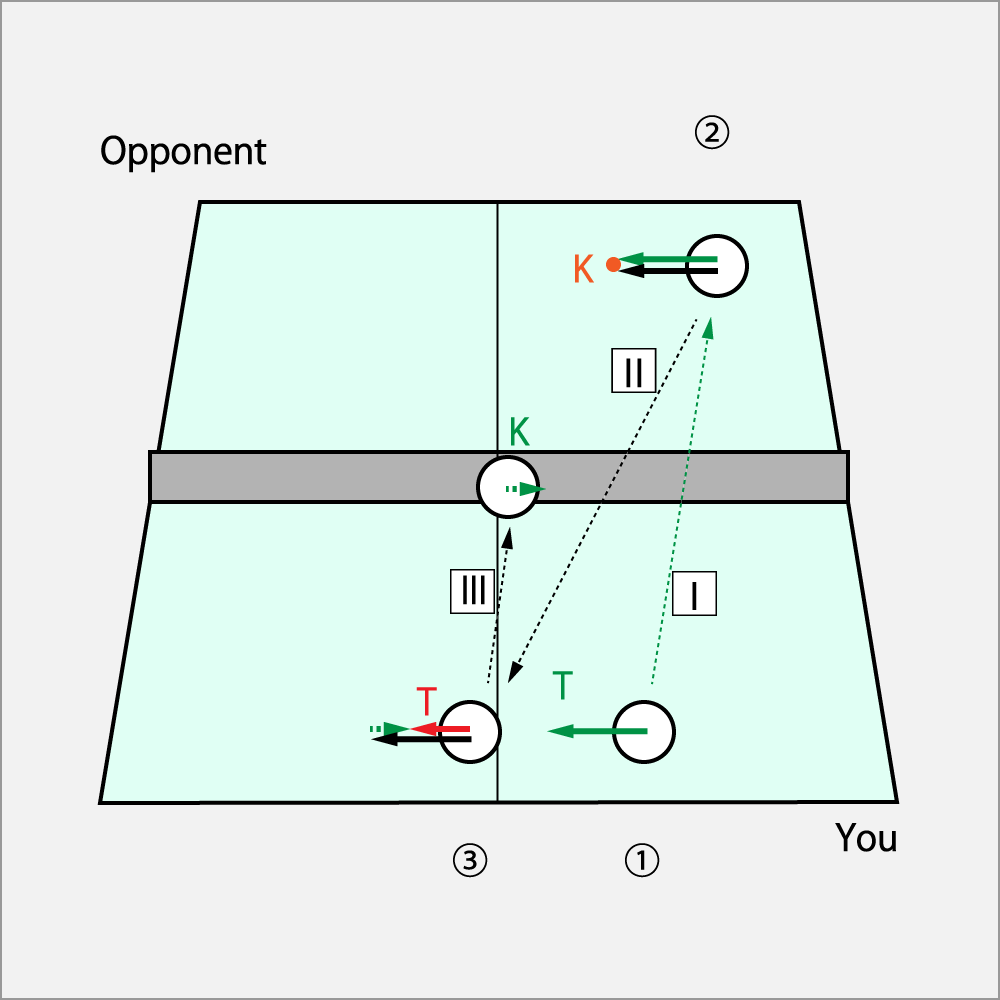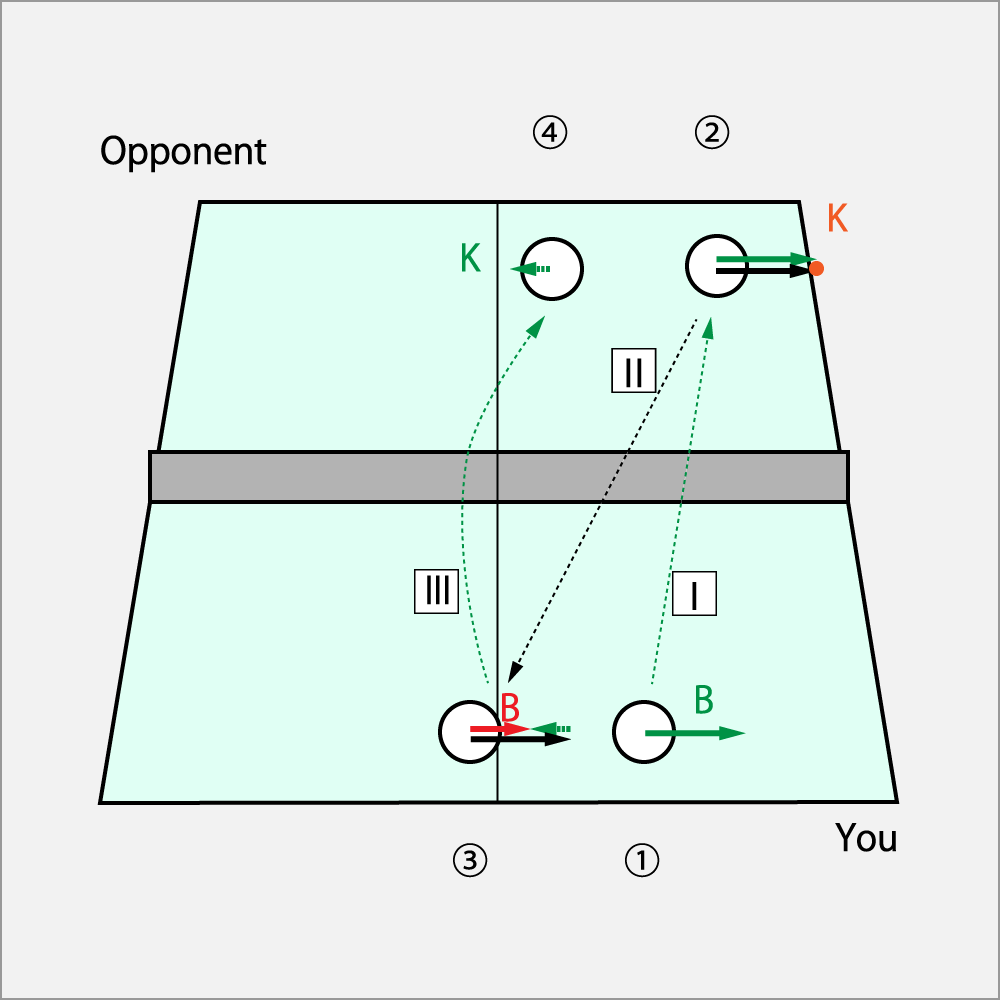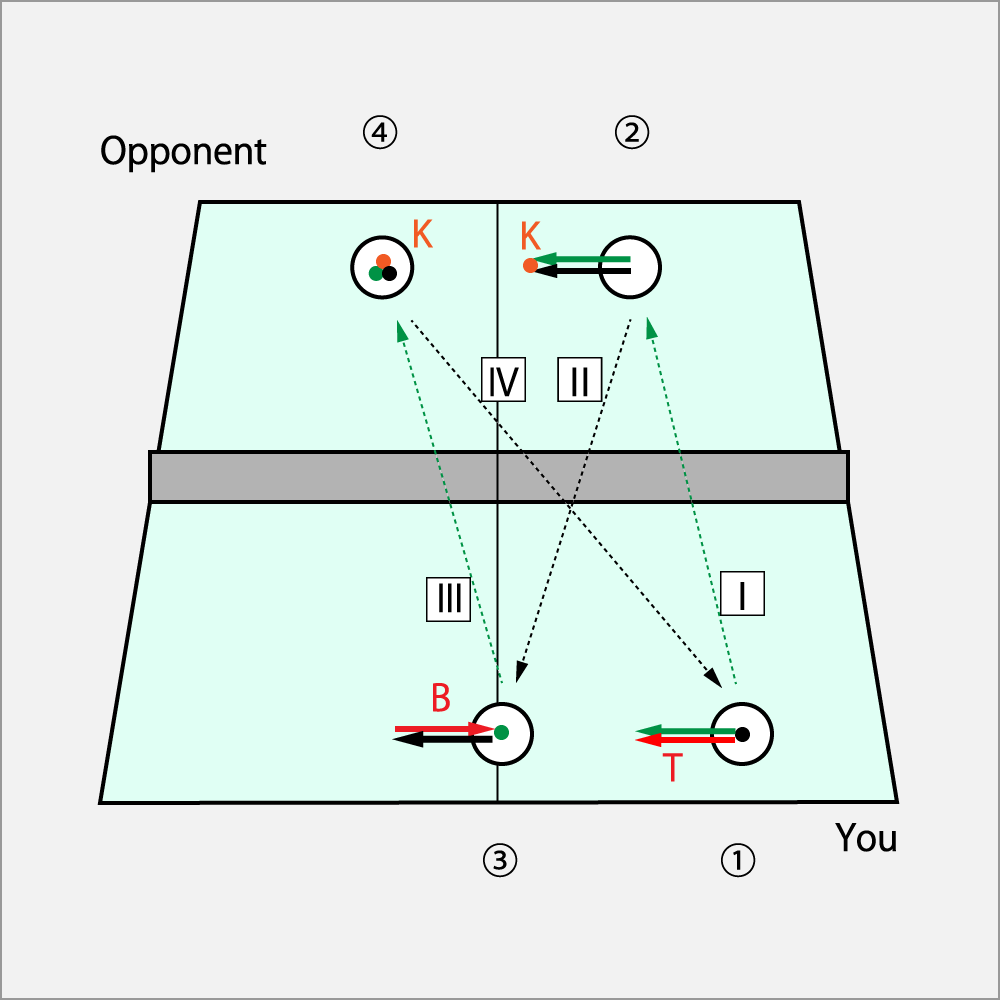Part 5. Tactics against Various Rubberers
5.2. Tactics against Long-pips Rubberers
In this page, at the first, explains the rational tactics which is determined from the rubber properties of the Long-pips of which the opponent's racket is wearing.
After that this page describes your reasonable strategy, which is determined from the spin kinds that the opponent rubber fed out.
The rubber you are using is assumed the Inverted.
The Pips-out-one-sheet and Anti-spin have a similar prosperty to the Long-pips, and which are treated as the same one.
The strategy described here, it will indicate you a new world.
You may not always be able to beat them by using the strategy described here,
but you will be eliminated losing games from the reason you don't know the properties of the rubber.
At least, you will gain an advantage at the level of knowledge.
More Sophisticated Tactics against Long-pips Rubberers
5.5 More Sophisticated Tactics against Long-pips Rubberers
5.2.1. Opponent's Tactics
- Since the Long-pips is low friction and the ball speed is also slow, the opponent takes a defensive position at front.
- Their tactics intend to let your self-destruction with using your own spin aggressively since you use a Inverted rubber. Since Long-pips is low friction, the ball which was fed out to you will return while keeping its spin. In other words, the Drive throwing from your Inverted is returned as a Cut, and the Cut throwing from your Inverted is returned as a Drive.
- All services from the Long-pips become knuckle. Even if their swings seemed to add spin, those are knuckle. It is easy to trick you.
(A) When you served with Drive from you to your opponent

The left figure shows the case to start with Drive to the back-hand-side of Long-pips' opponent.
① You served the ball with Drive (T) on the line Ⅰ.
② The opponent of Long-pips rubber receives with a Knuckle (K) by Drive motion, so the ball will return with ΘCut (ΘB) on the Ⅱ.
③ If you had not understand the characteristics of Long-pips exactly, you would misunderstand this, think of the II's spin as ΘDrive (ΘT) and receive it with the Drive (T) by the block with the racket facing upward. Therefore, the ball would receive the reaction force of downward rotation and become a Knuckle (K) and would be caught in the net on the Ⅲ.
(B) When you served with Cut from you to your opponent

The left figure shows the case to start with Cut to the back-hand-side of Long-pips' opponent.
① You served the ball with Cut (T) on the line Ⅰ.
② The opponent of Long-pips rubber receives with a Knuckle (K) by Drive motion, so the ball returns with ΘDrive (ΘT) on the Ⅱ.
③ If you could not understand the characteristics of Long-pips exactly, you would misunderstand this, think of the Ⅱ's spin as ΘCut (ΘB) and receive it with the Cut (B) by the block with the racket facing upward. Therefore, the ball would receive the reaction force of upward rotation and become a Knuckle (K) and would be a present ball on the Ⅲ.
5.2.2. Your Tactic
Rally with Long-Pips
Let's explain the rally with the opponent of Long-Pips using only Drive and Cut to understand 6.2 "More sophisticated strategy against the Long-Pips rubbers". Actually, in the game, we can see a lot of players using this tactic.
In order to continue the rally to the opponent of Long-Pips, your spin will come back as it is, so you need to rely on the spin you applied earlier to decide the next spin. Then you can continue the rally, find the opportunity and decide the game with the smash.
This example starts the service with Drive. When starting a service with Cut, just reverse the example.

① When you serve the ball with Drive (T), it flies towards the opponent with Drive (T) on the line Ⅰ.
② The opponent receives the spin on the Ⅰ by the Knuckle (K) of Long-Pips, so the ball is returned with ΘCut (ΘB) on the Ⅱ.
③ If you add the spin of Cut (B) to the spin on the Ⅱ, you can return it with the spin of Knuckle (K) on the Ⅲ to the opponent.
④ The opponent receives it by the Knuckle (K) of Long-Pips to the spin on the Ⅲ, so you can return it with Knuckle (K) on the Ⅳ to the point ① .